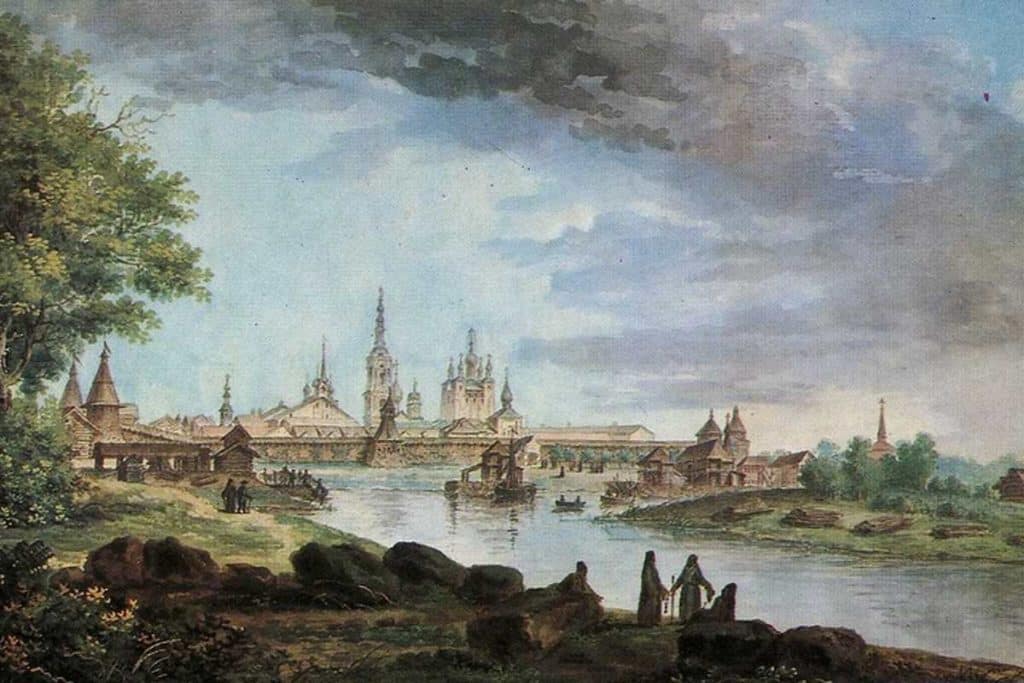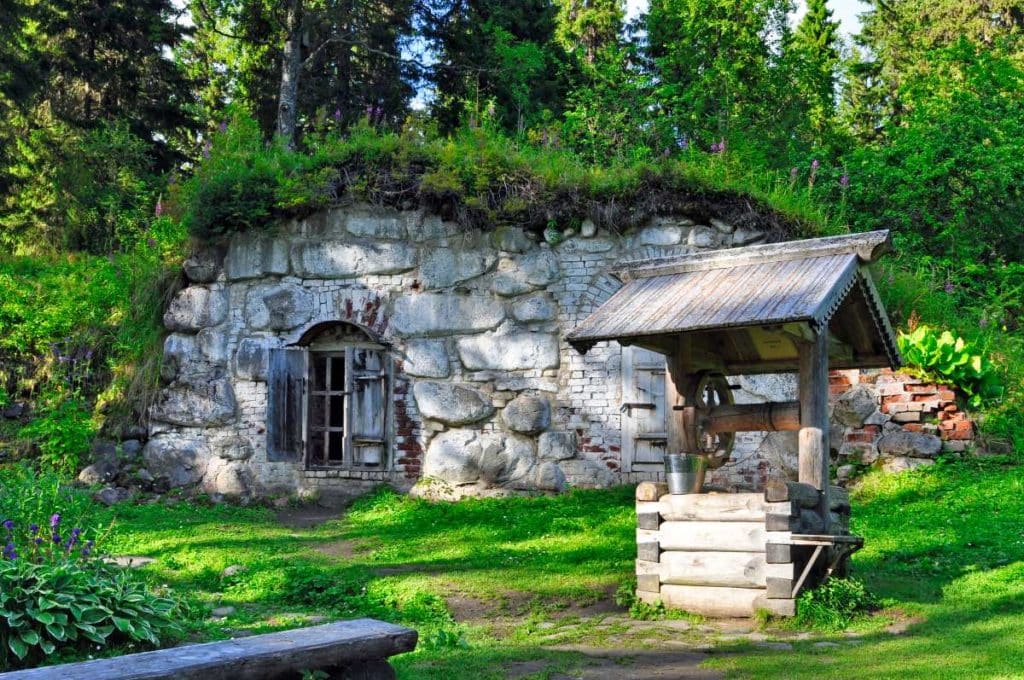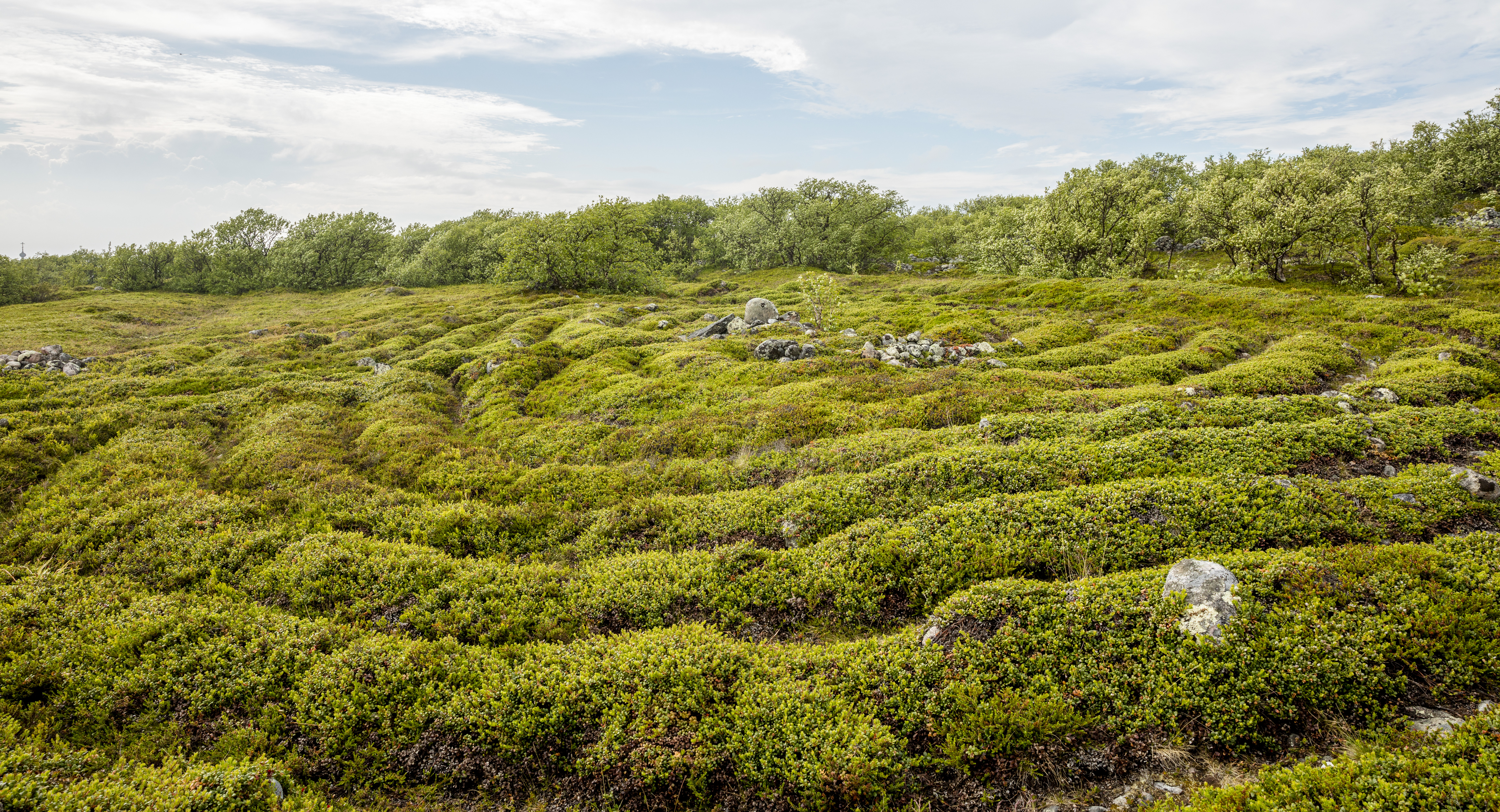South of the Kola Peninsula in the far northwest of Russia stretches the White Sea. In the midst of this in winter bitterly cold tributary of the Arctic Ocean lies a small archipelago, the Solovetsky Islands. Not only is there a monastery here, which is now a UNESCO World Heritage Site, but it was also the site of Russia’s first large prison camp, which became exemplary for the Soviet Gulag system and inspired Alexander Solzhenitsyn’s to his “Gulag Archipelago”. That would be enough reasons to take a closer look at this region, but also the nature knows how to inspire and stone-age stone labyrinths still puzzle scientists here. As you can see, there is a lot to discover on the Solovetsky Islands!
These are the Solovetsky Islands
The archipelago consists of six large islands, joined by several smaller islets. The largest of the islands is Bolshoy Solovetsky (“Great Solovetsky”) with an area of almost 250km². Anserski, the second largest island, is five times smaller with almost 50 km², Bolshaya Musalma with 17km², Bolshoi Sayazki (1.25 km²), Maly Sayazki (1 km²) and Malaya Muksalma (0.6 km²) are tiny compared to Bolshoy Solovetski. The islands are located a good 500 km north of Saint Petersburg and only a good 150 km south of the Arctic Circle. The climate here is continental. Icy winters are followed by relatively warm summers, which are also responsible for the richness of species on the island. But more about that later. But why did this remote landscape play such a big role in the country’s history?
The history of the Solovetsky Islands
To answer this question, one must consider the history of the archipelago. And in view of its remoteness, it goes back further than one would initially expect. Already in the 6th millennium BC there were permanent settlements here. It was not until much later, in the 2nd and 1st millennia BC, that the stone labyrinths described below were created. Little is known about the first settlers. However, it is certain that Saami and Karelians lived here in the early Middle Ages.
Russian settlement
It was not until the 12th and 13th centuries that Russian settlers first came to the island of Bolshoi Solovetsky. Among them were many monks, who founded a monastery in the 15th century. The monastery originally consisted of only three wooden churches and was repeatedly expanded over time. It subsequently developed not only into an important spiritual center, but also prospered economically, and expeditions were launched from here with the aim of missionizing the Saami. In the 16th century the monastery was developed into a fortress. At that time it was already used as a place of banishment, and from 1579 a prison was in operation here. Banishments had a long tradition and were often a temporary means of getting rid of disagreeable opponents at court.
Solovetsky as a prison fortress
At the tsar’s behest, the Solovetsky monastery was turned into a fortress, while at the same time political prisoners continued to be interned here. As a result, there were disputes between the monks and the central church, and the monastery became a stronghold of the Old Believers. After a first unsuccessful siege of the complex, leaders of the rebels were finally executed in the monastery. Subsequently, it was mainly the tsar and the boyars who set the tone here, and the resistance of the monks was broken. In the course of the wars against Sweden, the complex withstood Swedish attacks several times. Then in the 18th century the monastery saw a prominent visitor, because several times Peter the Great was a guest here.

Short period of calm and coming to power of the communists
In 1814, it was decided to abandon the defensive positions and dissolve the monastery, which by now was no longer on the edge of the Empire (nearby Finland was then part of the Tsarist Empire). There followed a period of relative calm, but this was interrupted by the shelling of the monastery by British ships during the Crimean War.
The Communist takeover in Russia on the eve of the First World War had far-reaching consequences for the monastery as well. Thus, many monks were expelled, the last prior of the monastery was even murdered.

Gulag penal camp
In 1920, the communists set up a forced labor camp for political and alleged criminal prisoners on the grounds of the monastery. Here, they were able to make use of the buildings formerly used for military purposes and, due to the seclusion of the islands, operate unobserved by the public. In 1931, more than 70,000 prisoners were interned here, an almost immense number considering the size of the monastery. An important role in this was played by Naftali Frenkel, who established here what one historian later described as “an original cell of the later Soviet camp system of the Stalin era.” The camp at Bolshoy Solovetsky thus became the model for the internment of political opponents later forced by Stalin in the “Great Terror”.
Incidentally, the “popularization” of this kind of “state re-education through hard work” was significantly contributed to by none other than Maksim Gorky. He visited the camp in 1929 and subsequently wrote a song of praise for the camp, in which “criminal elements” were successfully educated to become well-behaved Soviet citizens – if they did not die in the process, of course. In the 1930s, the monastery was converted back into a prison and dissolved before the war, as it was henceforth to serve military purposes again. More than 800,000 people had passed through the camp in less than 20 years, many of them dying in appalling conditions. Torture and disease were the order of the day. A fate that the inmates shared with those in other camps, for example in Siberia.
Solzhenitsyn and the Solovetsky Islands
Aleksander Solzhenitsyn was an important Russian writer who received the Nobel Prize for Literature in 1970. His most famous work is “The Gulag Archipelago”. Solzhenitsyn was himself interned in a camp after World War II and worked on this historical account of the Soviet camp system for almost ten years after his release. He subsequently put work on the book on hold and, as a dissident, devoted himself to criticizing the Soviet system. When the KGB found the manuscript, he decided to publish it. He had placed a copy abroad and instructed his confidants to publish it, which happened in Paris in 1973.
But what does the Gulag Archipelago have to do with the Solovetsky Islands? Well, the penal camp here was a blueprint for the camp system in the Soviet Union as a whole, and also a source of inspiration for Solzhenitsyn. For he describes the Gulag camps as an archipelago of disenfranchisement and dehumanization, just as the Solovetsky Islands are an archipelago. Incidentally, after the book was published in the West, Solzhenitsyn was expelled, escaping the now-reformed island system of state oppression. He left the proceeds from the book to an aid fund he founded, which supported opposition figures and former prisoners in the Soviet Union and later in Russia. He lived in Switzerland and the United States after his expulsion, but returned to Russia after the fall of communism. In 2008 he died in Moscow.

The Solovetsky Monastery
Today monks live in the monastery again and already since 1992 some buildings are on the list of UNESCO World Heritage Sites. The monastery can be visited again today, though the prison no longer exists, of course. It is interesting how Solovetsky is seen today. It serves as an important symbol of the narrative of a holy Christian nation, with little thought given to its dark past. For example, on the Russian-language Wikipedia page, there is only a very brief passage dealing with this dark chapter of Soviet history. The importance of the monastery can also be seen from the fact that it adorns the back of the 500 ruble banknotes.
You can get an impression of the thick defensive walls, which are interrupted by a total of eight towers with hoods and several gates, during a visit today. On the site there are several churches from the 16th to the 19th century, but also a dining hall, an old mill and a bell tower can be visited.
The Solovetsky Prison Museum
For the Solovetsky Prison Museum you should have a basic knowledge of Russian, because unfortunately the exhibition is not in English. The exhibition is relatively small, but its many photographs offer a depressing insight into life in the prison and camp. By the way, there is another museum on Bolshoj Solovetsky. It is located not far from the monastery and provides information about seafaring and Arctic expeditions that start from here. Here you can also book whale watching tours and trips to other islands of the archipelago.

Nature on the Solovetsky Islands
Due to their isolated location, the Solovetsky Islands have a kind of microclimate. This provides an exemplary abundance of flora and fauna, which is why today many people travel to the archipelago not only because of the monastery, but precisely to admire the numerous natural beauties.
The flora
The Solovetsky Islands are a rich natural landscape, which includes a total of 548 plant species. It is mainly grasses, algae and shrubs that characterize the islands. A peculiarity is the non-appearance of plants that would actually be quite normal for such climatic conditions. This circumstance can be explained by the isolated location of the islands. Besides grasses and shrubs, there are also pine and spruce forests and some swamps. It is interesting to note that the border between tundra and taiga climate is located right here. Since there is no permafrost here and the sea has a balancing effect on the climate, the Solovetsky Islands are also called a pseudotundra landscape.

The Botanical Garden
You can see the rich natural landscape for yourself in the Bolshoi Solovetsky Botanical Garden, created as early as 1822. Monks used it for the study of local flora and for relaxation. On an area of 5 hectares you can get an overview of the many ornamental and medicinal plants. None of the 1822 original plants exist today, but some trees are over a hundred years old.

Animals on the Solovetsky Islands
The fauna is less diverse. But the species that live here are usually found in large numbers. You will find squirrels, hares, foxes and even reindeer. There are also numerous species of butterflies. Ornithologists can observe 190 different species of birds here, including gulls, loons, partridges, capercaillies and mallards. Perch, pike and burbot can be found in the lakes. But the most exciting habitat is the White Sea. With luck you can spot seals, white whales and fish like lumpfish or herring. For the white whales, of which there are about 80 left, a protection zone has been established. It is forbidden to sail near Cape Belushiy on the west coast of Bolshoj Solovetsky. But you can hike here and have a good chance to see the whales.

The labyrinths on Bolshoj Sayazki
With an area of only 1.25 km², Bolshoy Zayazki (“Big Rabbit Island”) is tiny. Why is a trip here nevertheless worthwhile? Well, 14 of the 35 stone labyrinths on the archipelago are located here. There is no other collection of so many man-made labyrinths in the world. But you can also discover a lot of other things here, because some other works of art have been created from the local stones. There are probably 850 in total, including some dolmens.
Anyone who thinks that the labyrinths are a gag by a resourceful tourism organization is mistaken. They date back to the Stone Age and their exact function is still a mystery to scientists today. Possibly, however, they are supposed to symbolize the transition from the world of humans to the world of spirits and to help people on their journey to the realm of the dead. You have another theory? Feel free to let us know and write a comment below!
Book recommendations
Do you want to learn more about the islands, you are planning a trip to Russia, or have always wanted to read Solzhenitsyn’s masterpiece? Then the following book tips will help you!
Solzhenitsyn’s powerful picture of the Gulag system is a reminder worth reading and offers deep and dark insights into the Soviet camp system.
- Tolkachev, Vladimir (Author)
This small book deals with the mysterious Solovetsky labyrinths and is a perfect preparation for your trip
You want to know more about Russian culture? This book is an international bestseller and get’s very close to the “Russian soul”.
We hope you enjoyed our article about Solovetsky Islands. Feel free to follow us on Facebook or Pinterest to stay up to date with the latest articles!

